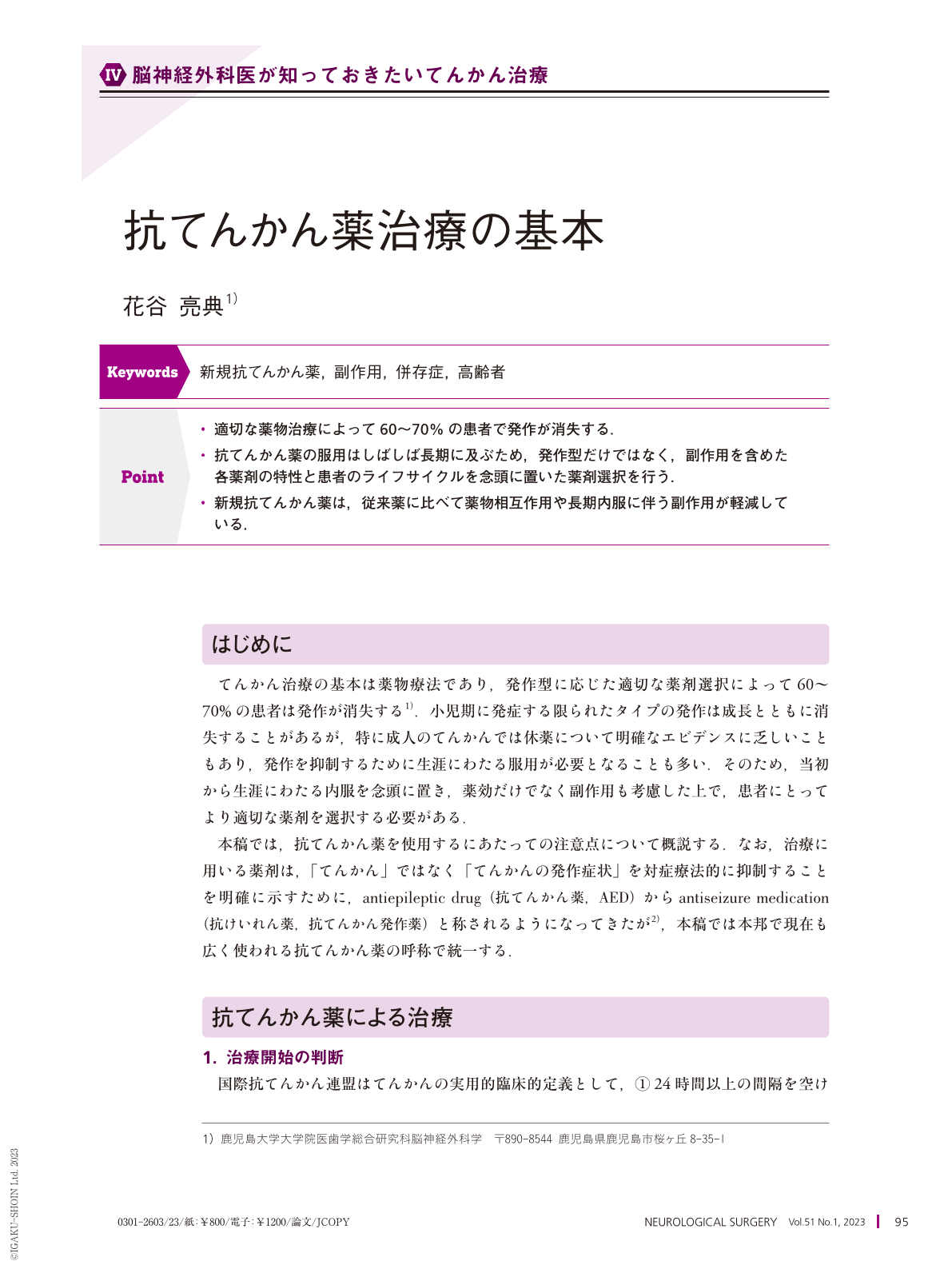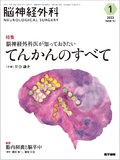Japanese
English
- 有料閲覧
- Abstract 文献概要
- 1ページ目 Look Inside
- 参考文献 Reference
Point
・適切な薬物治療によって60〜70%の患者で発作が消失する.
・抗てんかん薬の服用はしばしば長期に及ぶため,発作型だけではなく,副作用を含めた各薬剤の特性と患者のライフサイクルを念頭に置いた薬剤選択を行う.
・新規抗てんかん薬は,従来薬に比べて薬物相互作用や長期内服に伴う副作用が軽減している.
One to three antiseizure medications(ASM) achieve good seizure control in 60-70% of patients with epilepsy. However, a large number of patients experience adverse effects and have to change the ASM. Prolonged newer ASMs elicit fewer adverse effects and fewer drug interactions than traditional ASMs. Their teratogenicity has also been reported to be low. The antiseizure effects of the new ASMs are not greater than those of traditional AEMs; however, these ASM characteristics improve adherence and allow combination therapy for drug-resistant epilepsy. Newly developed ASMs have fewer drug interactions than conventional drugs do. Therefore, even for symptomatic epilepsy caused by cerebral lesions such as cerebrovascular disorders or brain tumors, it is easier to use antiepileptic drugs in combination with other drugs for the treatment of these diseases. Furthermore, prescriptions for epilepsy in the elderly, which will increase in the aging society, should be made without increasing the risk of stroke or bone fractures caused by antiepileptic drugs, while simultaneously minimizing the effects of antiepileptic drugs on cognitive function and psychiatric disorders. This review outlines the pharmacotherapy for patients with epilepsy.

Copyright © 2023, Igaku-Shoin Ltd. All rights reserved.


